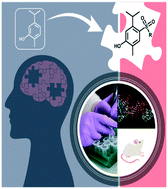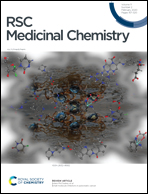Structure–activity relationships of sulfonamides derived from carvacrol and their potential for the treatment of Alzheimer's disease
Abstract
Five synthetic sulfonamides derived from carvacrol, a natural product and a small molecule with druglike properties, were evaluated with respect to their effects on the cognitive deficits of animals with streptozotocin (STZ)-induced Alzheimer's disease (AD). Memory, ambulation, anxiety and oxidative stress were evaluated. In vitro assays were performed to assess the inhibition of acetylcholinesterase (AChE), and the data were combined with molecular docking for the establishment of structure–activity relationships. The memories of animals treated with the compounds derived from morpholine (1), hydrazine (3) and 2-phenol (5) were improved. Compound 3 was the most promising, yielding excellent results in the inhibitory avoidance test. Moreover, the compounds did not exhibit any deleterious effects on the animals' ambulation in the open field test. Molecular docking confirmed the results obtained in the AChE inhibition assay. In short, compounds 1, 3 and 5 can reduce STZ-induced deficits and show potential for the treatment of Alzheimer's. In addition, these agents produce significant anxiolytic and antioxidant effects.

- This article is part of the themed collection: Celebrating Latin American Talent in Chemistry


 Please wait while we load your content...
Please wait while we load your content...